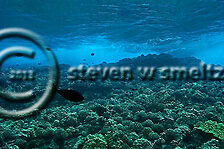
When discussing coral reefs, many people think of the Great Barrier Reef in Australia, the reefs surrounding the Caribbean islands, aqua-blue water and long sandy beaches surrounding picturesque islands. However are much more. They are wide spread around our world and contain an unbelievable amount of marine life. Come join us for a discussion and exploration of this marvelous world.
Coral reefs are estimated to cover 284,300 km (109,800 sq mi), just under 0.1% of the oceans’ surface area. The Indo-Pacific region (including the Red Sea, Indian Ocean, Southeast Asia and the Pacific) account for 91.9% of this total. Southeast Asia accounts for 32.3% of that figure, while the Pacific including Australia accounts for 40.8%. Atlantic and Caribbean reefs account for 7.6%.

This series of articles will focus on what are coral reefs and try to understand their importance to our environment. Some of the items that we will review includes:
- Types of Coral Reefs
- Benefits of Coral Reefs
- Dangers to the Reefs
- Economics impacts of Coral Reefs
Coral Reefs Overview

These reefs form a critical part of the earth’s overall ecosystem. While these reefs cover less than one tenth of one percent of the earth’s oceans these same reefs are estimated to contain one quarter of known marine fish species. Scientists estimate that there could be anywhere from one to eight million undiscovered species living in and around the coral reefs (Smithsonian Institute).

The importance of this precious resource cannot be underestimated. Coral Reefs are critical to not only our ecosystem but also the world’s financial system. These benefits include fishing and harvesting of marine plants and animals, the ability of the reefs to protect land masses from dangerous storms, providing moisture that in turn provides rain to all of the earth’s land masses, and much more. Without these reef systems our world would look much different than it does today.

Corals are tiny animals which belong to the group cnidaria (the “c” is silent). Other cnidarians include hydras, jellyfish, and sea anemones. Corals are sessile animals, meaning they are not mobile but stay fixed in one place.
As corals grow and expand, they will form one three reef types:

- Fringing
- Barrier or
- Atoll.
Fringing reefs: These are the most common types of coral reefs and they project seaward directly from the shore, forming borders along the shoreline and surrounding islands.
Barrier reefs: These reefs also border shorelines, but at a greater distance. They are separated from their adjacent land mass by a lagoon of open, often relatively deep stretch of water.

Atoll: These reefs form when a fringing reef forms around a volcanic island and continues to grow upward while the volcanic island subsides completely below sea level. Atolls are usually circular or oval, with a central lagoon. Parts of the reef platform may emerge as one or more islands, and breaks in the reef provide access to the central lagoon.
All three reef types of coral reefs—fringing, barrier and atoll—share similarities in their bio-geographic profiles. Their bottom topography, depth, wave, current strength, light, temperature, and amount of suspended sediments act to create horizontal and vertical zones of corals, algae and other species. While these zones vary according to the location and type of reef, there are a number of major divisions which are common to most reefs, as they move seaward from the shore, including the reef flat, reef crest or algal ridge, buttress zone, and seaward slope as illustrated below.

Through this series of articles we will answer the following questions:
- What are Coral Reefs?
- Where are Coral Reefs located and How were they formed?
- What are the different types of Coral Reefs?
- What types of creatures inhabit coral reefs?
- What are the threats to Coral Reefs?
- What are the potential impacts of these threats on us from the impacts to our economy, to food supplies, to medicines and more
- What if anything should we be doing to help the coral reefs?
- How can you help?
So come join in the discovery of our coral reefs and the underwater world that is so amazing and important to each and everyone one of us.

Series:
- What are Coral Reefs
- Introduction to the Underwater World
- Creatures of the Coral Reef
- Manta Rays, Silent Sentinels of the Sea
Resources:
Marine Species Galleries:
Coral Reef Images
Pictures of Fish
Sea Turtles
Crustaceans and Echinoderms
Moray Eels
Detailed Information on select Marine Species:
Caribbean Fish
Hawaiian Fish
Sponges
Crustaceans, Invertebrates, Mollusks, Echinoderms

1 thought on “What are Coral Reefs?”